The concept of a meme has been around for quite a while, now. It was first introduced in 1976 by Richard Dawkins in his book, “The Selfish Gene”, as a way of explaining behaviour which may not have an evolutionary imperative, but nevertheless persists across societies. I remember studying it in first-year philosophy at University and thinking how apt a concept it is.
These days when you say meme people tend to think a funny photo. But in their own way, they’re both the same thing.

I’ve been dealing with data protection memes for years, so it’s high time for a bit of a mashup using my favourite current meme.
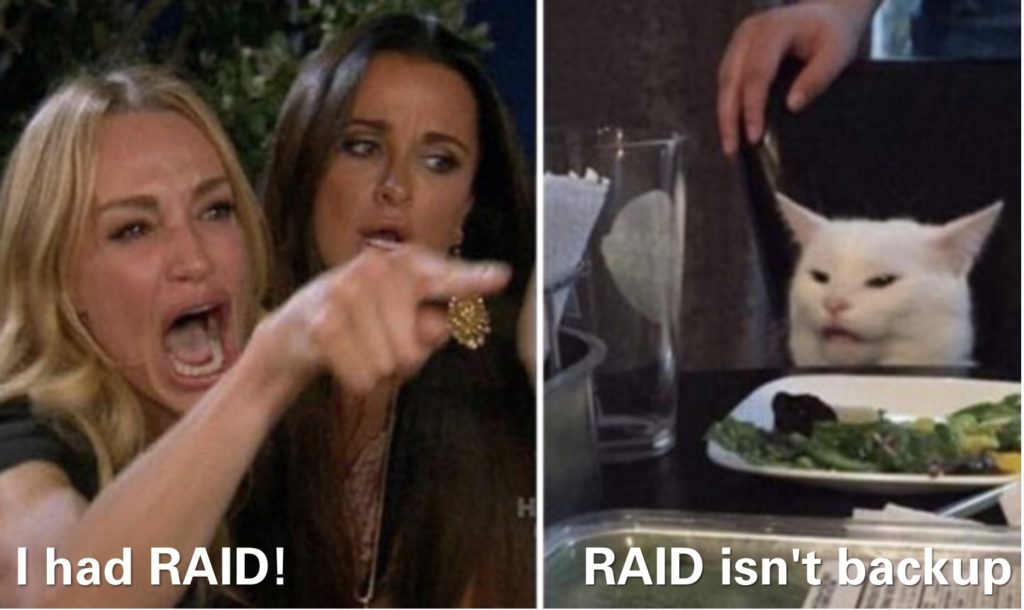
Nothing deletes data faster than a mirrored drive in a RAID unit. RAID is pretty much a fundamental part of your data fault tolerance, but it’s no replacement for backup.

Even if you’re still using tape, just sending them off-site isn’t a disaster recovery (DR) plan. There’s a lot more in DR than merely having an off-site copy of your data. That being said, unless you’re a niche or tiny business, performing DR from tape is likely an exercise in horror. Data protection is a continuum of services to meet different SLAs, and unless your SLAs allow you to spend a month or longer performing DR, recovering from tape shouldn’t form part of your DR plan.
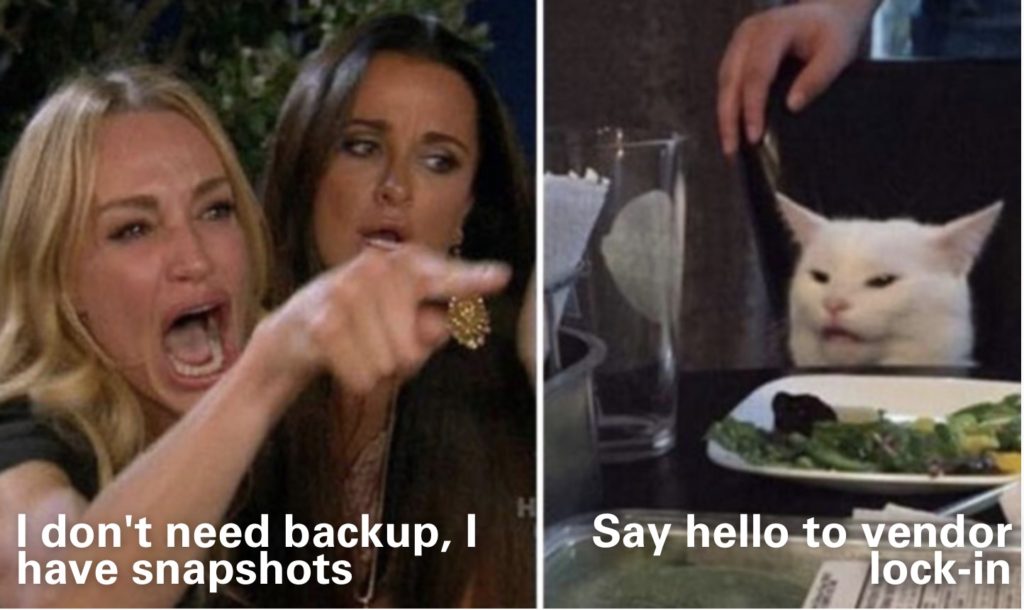
I sometimes get accused of having a beef against snapshots. I really, genuinely don’t. I love snapshots. I think they’re great. But I think like everything in data protection, they have a use. Trying to shoe-horn an entire data protection solution into any single data protection approach is nuts. It creates a nightmare if you need to keep long-term compliance copies of data (e.g., snapshots kept for 7 years), and it’s also the absolute perfect way to create vendor lock-in. Every data protection strategy should be a holistic mix.

Look, you don’t have to clone your backups. There’s no-one saying, “if you don’t clone your backups, they won’t work”, but it is always a risk vs cost decision.
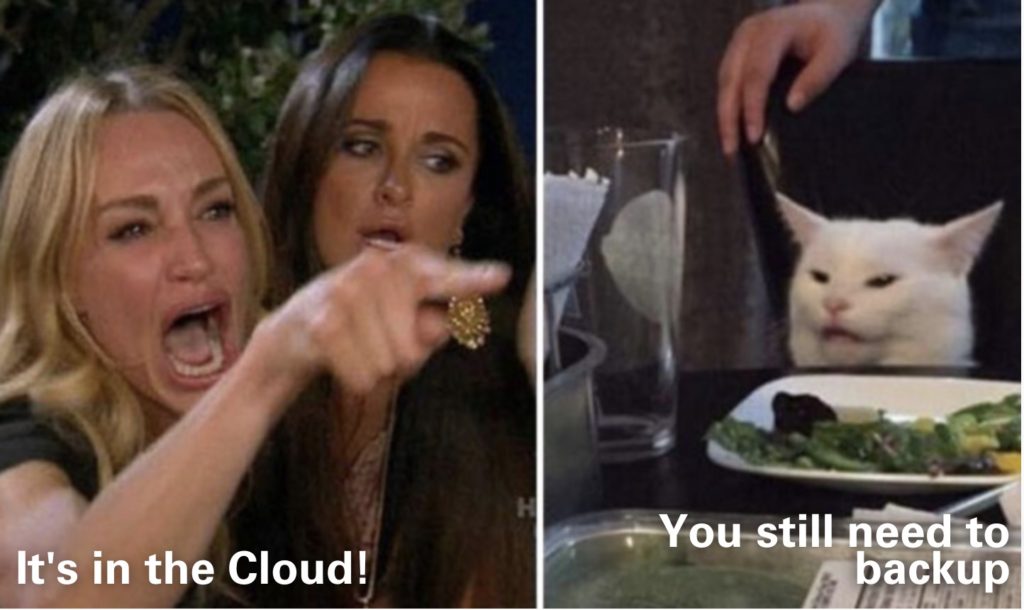
I’m sometimes taken by surprise at how often I still have this conversation. Putting your data in public cloud doesn’t guarantee it’s protected. The public cloud companies provide a level of resiliency and redundancy, but if someone logs into an RDS database and deletes your customer records for instance, how does any cloud service provider know that wasn’t a valid request? Optimally you’ll find yourself using a mix of cloud-native data protection (e.g., snapshots), and backup and recovery. Moving from on-premises into the public cloud doesn’t change the conversation that much when it comes to holistic data protection strategies.
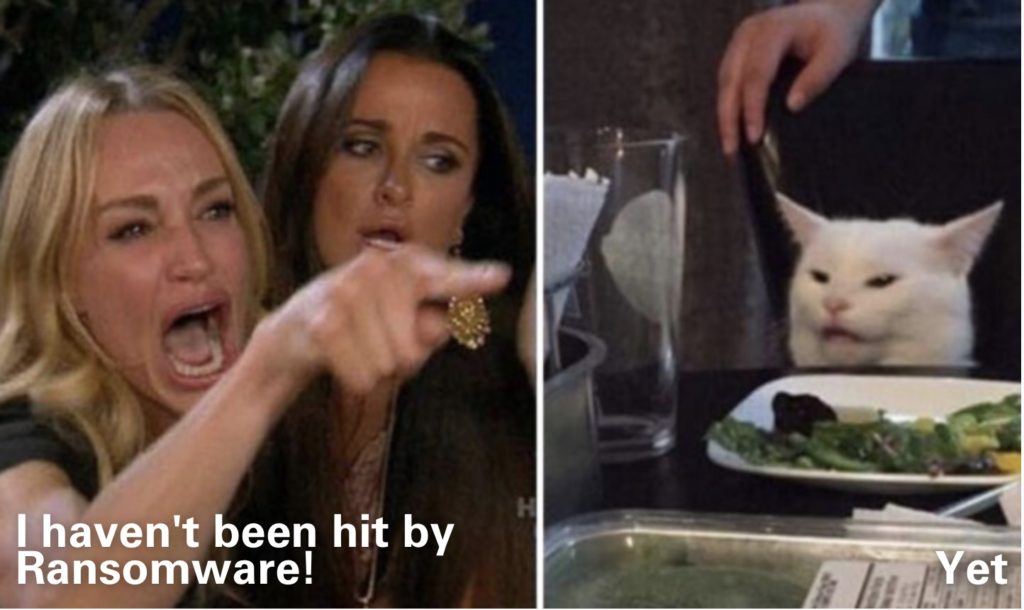
Ransomware, sadly, is a fact of life. Every business is going to be hit by it at some stage. This means that planning for Ransomware covers more than just making sure your network threat detection systems are up to date. Accepting that you’re going to be hit by ransomware allows you to plan for the … oh, what next? moment.
As data protection professionals, we have to remind ourselves that it’s easy to become complacent and that there’s a lot of misconceptions about where, when and how we need to protect our data. Maybe memes are a way of getting some of those messages across.
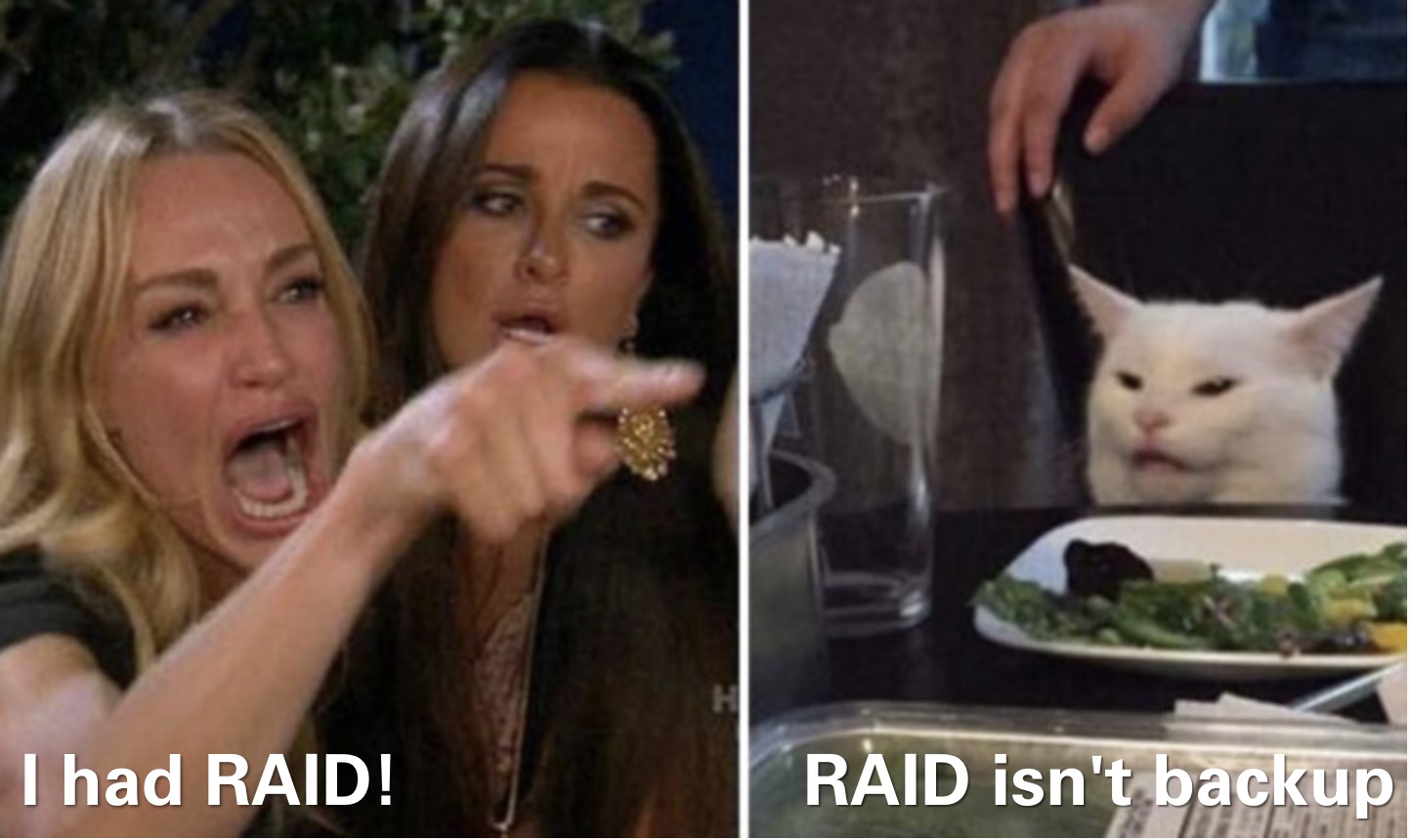
Thanks